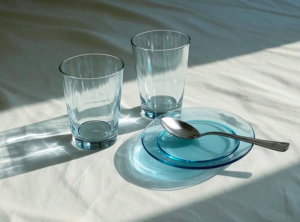Acrylic tableware has gained popularity in recent years due to its lightweight design, vibrant colors, and durability. However, when it comes to children, safety and practicality become paramount concerns. Is this modern material truly a suitable choice for young ones?
Understanding Acrylic Tableware
Acrylic, a type of thermoplastic polymer (polymethyl methacrylate or PMMA), is prized for its shatterproof nature and clarity. Unlike glass or ceramic alternatives, acrylic tableware weighs 50% less yet can withstand drops from heights up to 1.5 meters without cracking, according to material stress tests. Its transparency mimics glass, making it visually appealing for decorative purposes. However, these advantages must be weighed against potential health and safety considerations.
Safety Concerns: Chemical Composition and Leaching
One primary concern is the leaching of chemicals, particularly bisphenol A (BPA) or phthalates, which are linked to developmental issues in children. Fortunately, high-quality acrylic tableware is BPA-free and complies with FDA food-safe regulations (21 CFR 177.1040). Studies by the European Food Safety Authority (EFSA) indicate that acrylic products with a molecular weight above 100,000 g/mol release negligible chemicals under normal use. Still, low-cost or poorly manufactured items may degrade over time, especially when exposed to high temperatures (above 85°C or 185°F), increasing leaching risks.

Practicality for Children: Durability and Hygiene
Acrylic’s durability makes it ideal for clumsy toddlers. Unlike ceramic plates that shatter upon impact, acrylic tableware can endure repeated drops, reducing injury hazards. Its non-porous surface resists bacteria accumulation, a critical factor since children often have weaker immune systems. Dishwasher-safe models (rated to withstand temperatures up to 70°C) simplify cleaning, though handwashing with mild detergents is recommended to preserve clarity and prevent scratches.
Expert Recommendations and Alternatives
The American Academy of Pediatrics (AAP) suggests avoiding microwaving acrylic tableware, as heat can accelerate chemical leaching. For hot meals, stainless steel or tempered glass options may offer safer alternatives. Parents should also inspect tableware regularly for scratches or discoloration, replacing items every 12–18 months to ensure safety.
Environmental and Cost Considerations
While acrylic is not biodegradable, its longevity reduces waste compared to disposable plastic options. Recycling programs for PMMA exist, though accessibility varies by region. Economically, acrylic tableware costs 20–30% more than basic plastic sets but lasts significantly longer, offering better value over time.
Conclusion
Acrylic tableware can be suitable for children if chosen carefully. Prioritize certified BPA-free, food-grade products and avoid high-temperature use. By balancing durability, safety, and practicality, acrylic serves as a viable option for families seeking both style and substance at the dining table.
